Have you ever heard of a dish called arepa?
This dish, which is still unfamiliar in Japan, is very popular in South America, on the other side of the world from Japan.
This time, we will introduce the history and recipe of arepa.
TasteTune introduces diverse cuisines from around the world and also delivers music that expresses those dishes.
It is available on various subscription services such as YouTube and Spotify, so please enjoy it.
What is Arepa?
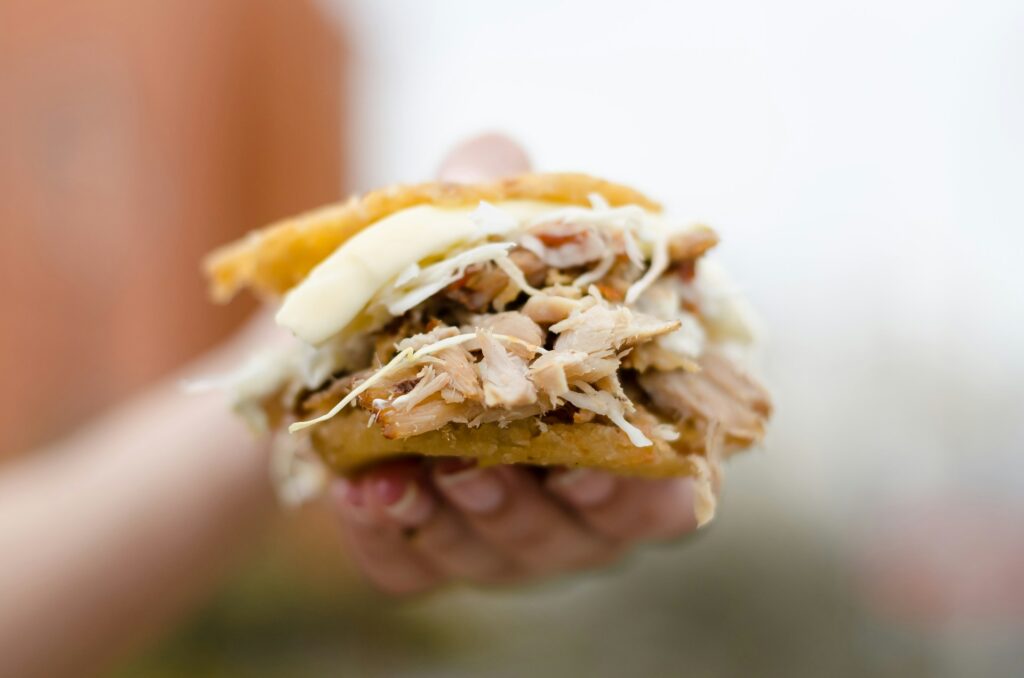
Arepas are corn flour dishes popular in South America, mainly in Colombia and Venezuela.
It is like “onigiri” in Japan, and is so popular that it can be considered a national food.
This palm-sized, disc-shaped food is crispy on the outside and chewy on the inside.
Made mainly from pre-cooked corn flour, water, and salt, it can be cooked in a variety of ways, such as baking, frying, and steaming.
TasteTune「Arepa」
Hey everyone, have you heard Tastetune's song “Arepa”?
This music draws inspiration from Arepa, expressing its warmth and vibrancy through sound. It weaves together rhythmic hand percussion and playful guitar to create a unique sonic world—be sure to give it a listen!
Below, we introduce the thoughts, expressions, and creative approaches embodied in this musical work.
Expressing the Earth's Bounty Through Sound: A Simple, Gentle Resonance
The charm of arepas lies in the simple, gentle flavor of their main ingredient: corn.
The rhythmic percussion, like clapping hands, and the lightly strummed guitar transform that flavor into sound.
That playful tone conveys the earth's strength and warmth that nurtures corn, vividly bringing out the simplicity and depth of the dish known as arepa.
Capturing Family Moments: Warm Harmony
Arepas are not meant to be eaten alone; their true charm shines when shared with family and friends.
That atmosphere is expressed through the light sound of wooden flutes and the bright resonance of strings.
Listening closely, the laughter of people gathered around the table and their warm exchanges come to mind.
Music gently tells us that “Arepa is not just a dish, but a vital presence that connects people.”
The warmth that invites you in: Scenes of the dining table painted by music
What flows throughout this entire piece is a “warm, welcoming atmosphere” and the “joy of sharing.”
Not flashy, but with a simple, pleasant sound that evokes the image of a family gathering in a Latin American kitchen to prepare homemade dishes together. The rustic charm of folklore blends with a festive brightness, naturally bringing a smile to the listener's face and soothing the heart.
The Essence of Arepa Experienced Through Sound
This arepa-themed music is more than just background noise—it's an experience of savoring food through sound. The warmth of the earth, the joy of sharing, and the heart of Latin America gently come through in every note. Let yourself be carried away on this musical journey and immerse yourself in the world of arepas, warming you right down to your heart.
The History of Arepa
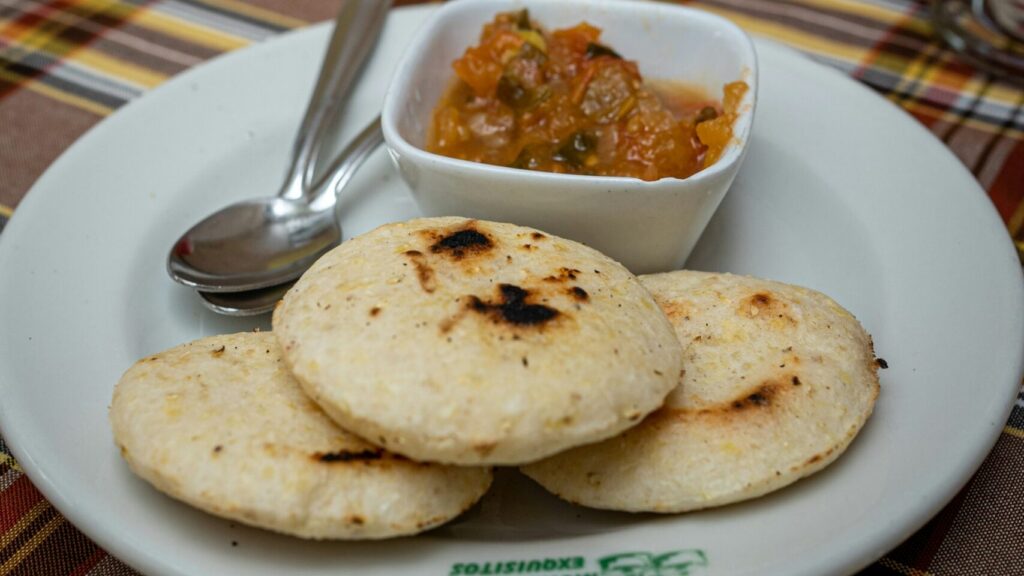
The origins of arepas date back thousands of years. It is said that they originated from a type of “thin flatbread” made by grinding corn and baking it, which was eaten by the indigenous peoples of South America.
At that time, indigenous peoples in Venezuela and Colombia regularly ate corn as their staple food.
The name “arepa” is said to originate from the Venezuelan indigenous word “erepa,” which means corn.
Then, as time passed, Spain colonized the region in the 16th century.
However, arepas remain part of the food culture and have been adopted as a staple food by Spaniards.
Since the 19th century, arepas have become established as a “national food” in Venezuela and Colombia.
Unique arrangements were created in various regions, and the tradition continued to develop.
It has now spread throughout the world through immigration and is recognized as an international dish.
Arranged menu of Arepas
1. Reina Pepiada
This is a classic Venezuelan arepa with a light and refreshing flavor.
This dish is creamy and refreshing, with the appeal of avocado's smoothness and chicken's heartiness.
Also, the name is said to come from “beauty pageant queen.”
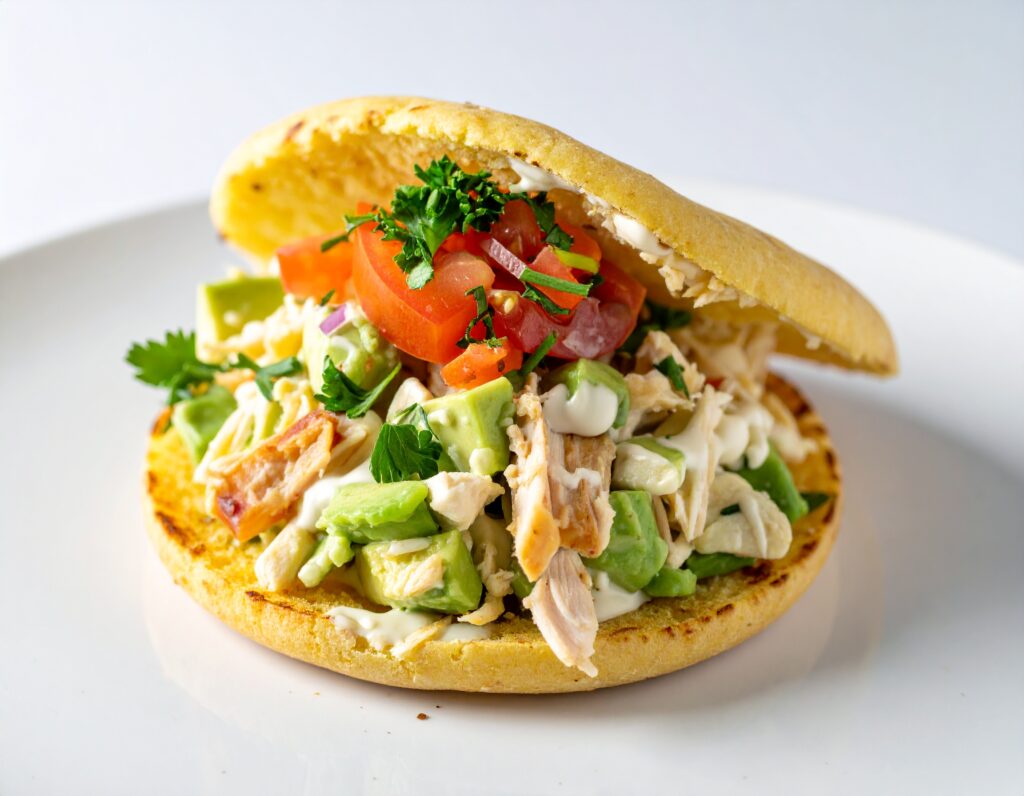
2. Arepa de Queso
This cheese arepa is easy to eat as a snack or breakfast.
This popular dish features melted cheese, aromatic flavors, and a salty taste that will whet your appetite.
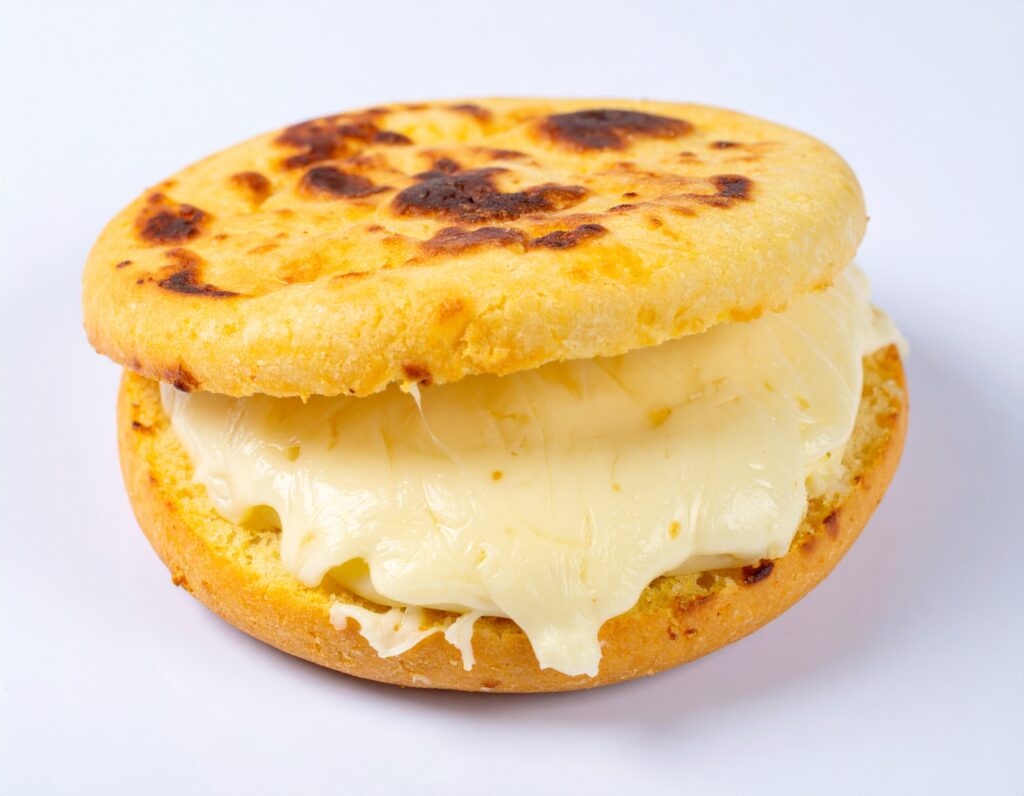
3. Pabellón Arepa
This is an arrangement of Venezuela's traditional dish, “Pabellón Criollo,” stuffed into arepas.
Pabellón Criollo is a Venezuelan set meal consisting of beef, beans, rice, and bananas.
Pavilion-style arepas also use beef stew and fried bananas.
It has a distinctive sweet and salty flavor and a luxurious arrangement that cannot be found anywhere else.

4. Arepa de Pernil
Pernil is roast pork.
Enjoy the juicy flavor of pork and the spicy sauce for a punchy taste.
It's also a popular arrangement for celebrations and Christmas.
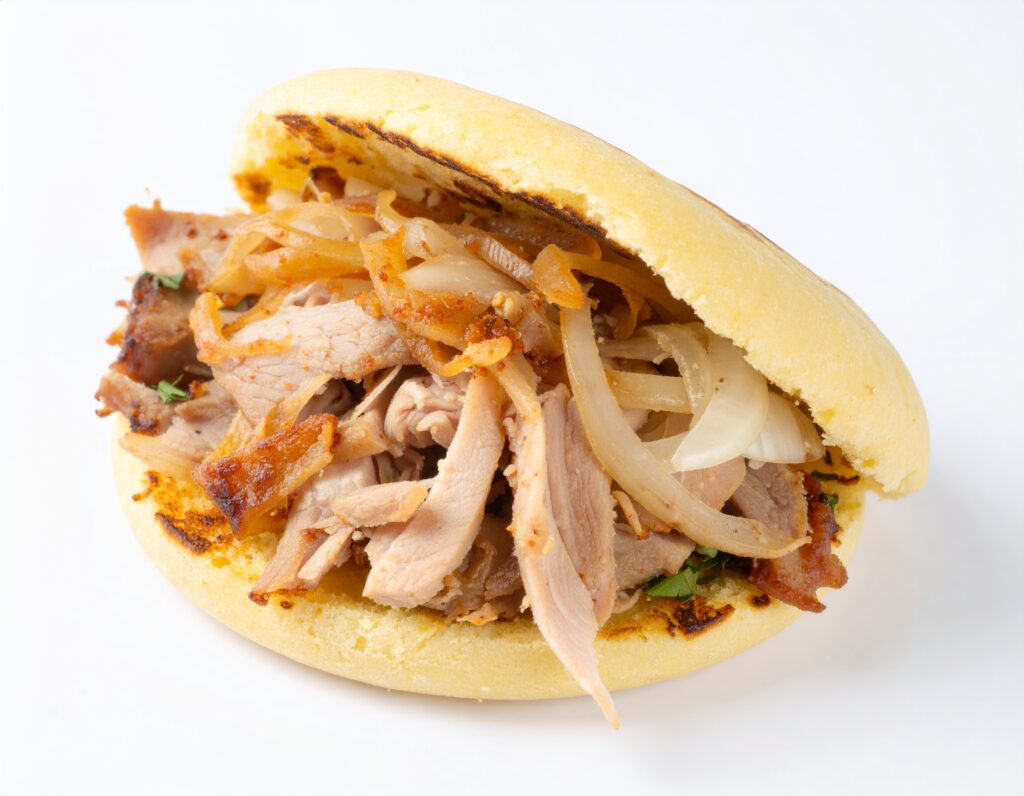
5. Arepa Vegana
As the name suggests, this is an arrangement menu that uses grilled vegetables, vegan cheese, black beans, and other ingredients.
It is popular among health-conscious and vegetarian people, and has recently become a staple at arepa specialty stores.
It is characterized by the freshness of vegetables and the subtle sweetness of beans, leaving a refreshing aftertaste.
It is nutritionally balanced and recommended for health-conscious individuals.
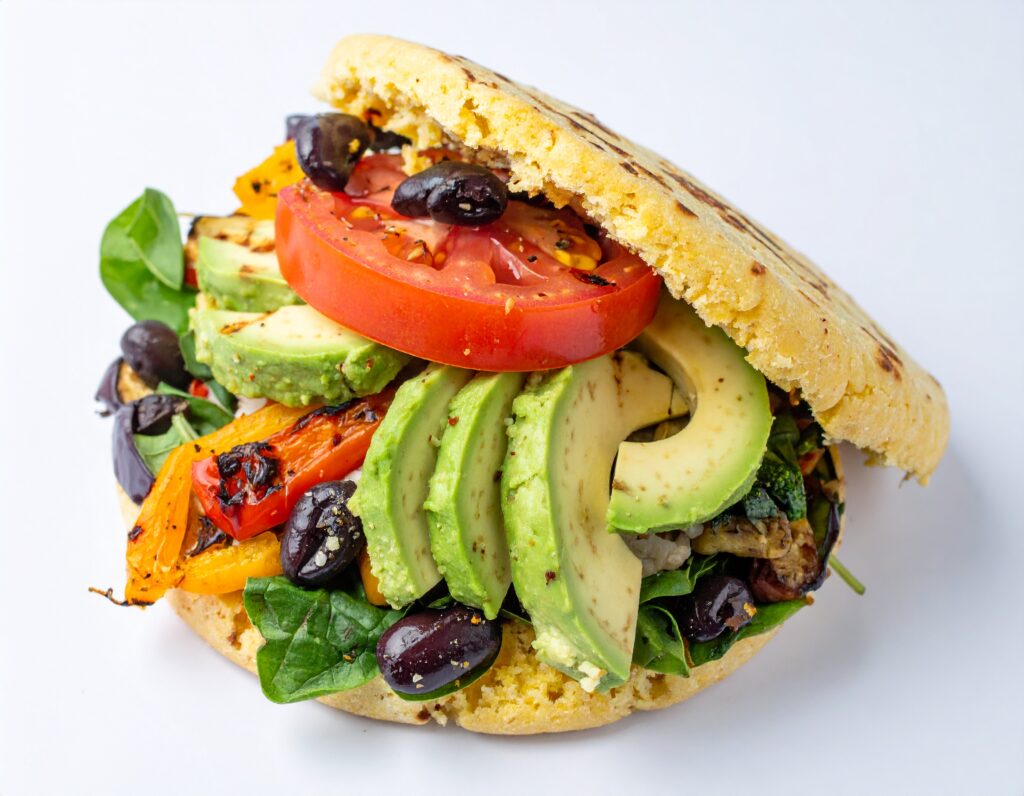
Trivia about Arepa
1. Cross-border disputes
Between Venezuela and Colombia, debates frequently arise over which country's arepas are the authentic ones.
It's like the Jollof Rice controversy (laughs).
This is because arepas are deeply rooted in the food cultures of both countries, and because there are differences between the arepas of the two countries.
Let me introduce the characteristics of arepas from both countries.
- Venezuela: The mainstream style is to split an arepa and fill it with plenty of ingredients, like a sandwich. It is eaten as the main part of a meal.
- Colombia: There are many variations, such as thinly sliced and mixed with cheese or deep-fried. It is often served as a side dish.
Both countries take pride in their national dishes, but the debate over food culture is enjoyed as a lighthearted exchange.
2. Special flour for arepas: “P.A.N.”
In fact, something developed in Venezuela has greatly contributed to the spread of arepas.
That is pre-cooked corn flour called “P.A.N.”
Developed in the 1960s, this “P.A.N.” allows you to easily make dough by simply mixing water and salt.
This has eliminated the traditional process of boiling corn, drying it, and grinding it into flour.
This product has firmly established arepas as a dish that can be made at home every day.
With the increase in Venezuelan immigrants, it is now sold in Latin American grocery stores around the world.
3. Arepa Day (Día Mundial de la Arepa)
It was established by Venezuelan immigrant organizations around the world to share their culture and preserve their identity.
This holiday, which began in 2012, is celebrated on the second Saturday of September every year.
Arepa festivals and charity events are also held in cities overseas, where cultural exchange takes place while eating arepas.
Events are also held in New York, Tokyo, and other cities, proving that arepas are spreading globally.
4. Arepa, which became space food
In 1999, Venezuelan astronaut Carlos Costa brought specially prepared arepas into space when he participated in a space shuttle mission.
This has become a hot topic as “arepas are South American cuisine eaten in space.”
Arepas, a common everyday dish, have become strongly associated with national pride among the people of their country of origin.
How to make Arepa
Ingredients (for 4-5 pieces)
- Pre-cooked corn flour (P.A.N., etc.) ... 2 cups (approx. 250 g)
- Water ... 2 1/2 cups (approx. 600 ml)
- Salt ... 1 teaspoon
- (Optional) Olive oil or butter ... a small amount
How to make them
- Mix water and salt
Put water in a large bowl and dissolve salt in it. - Add flour
Add the pre-cooked corn flour little by little and mix by hand.
Knead well so that there are no lumps. - Let the dough rest
Leave it for about 5 minutes to allow the moisture to blend in and soften the hair.
(Guideline: It should be about as soft as an earlobe. If it is too hard, add water; if it is too soft, add powder.) - Molding
Next, take the dough in your hands and roll it into a ball about the size of a tennis ball.
Then, flatten it with the palm of your hand to form a circular disc with a diameter of 8 to 10 cm and a thickness of 1.5 to 2 cm. - Toast
Cook both sides for about 5-7 minutes in a frying pan heated over medium heat (you can add a little oil if you like).
Once the surface is nicely browned, it's ready. - Finishing (oven or steaming)
- If you want it to be fluffier inside: Heat in a 200°C oven for about 10 minutes.
- It can be eaten as is, but it is ideal when crispy on the outside and chewy on the inside.
- Eat
Finally, make a horizontal slit with a knife to create a pocket, then stuff it with your favorite fillings (cheese, meat, avocado, etc.) to finish!
Tips for making it delicious
- The ideal result is not overcooked, with a crispy surface and moist interior.
- If the dough sticks to your hands, add a small amount of flour. Conversely, if it cracks, add a little water.
- If you are making it in Japan, “P.A.N.” is available at imported food stores and online, so it is convenient.
Summary
How was it?
This time, we introduced “arepa,” the national dish of Venezuela and Colombia.
I hope I have been able to convey some of the appeal of this dish, which is loved in South America and is now enjoyed all over the world.
From easy-to-eat items to luxurious arrangements that blend tradition, we hope you will be interested in these easy-to-make arepas.
You can enjoy Venezuelan cuisine at restaurants in Japan, or try the recipes above at home.
We hope you will find your favorite arepa and enjoy tasting it!
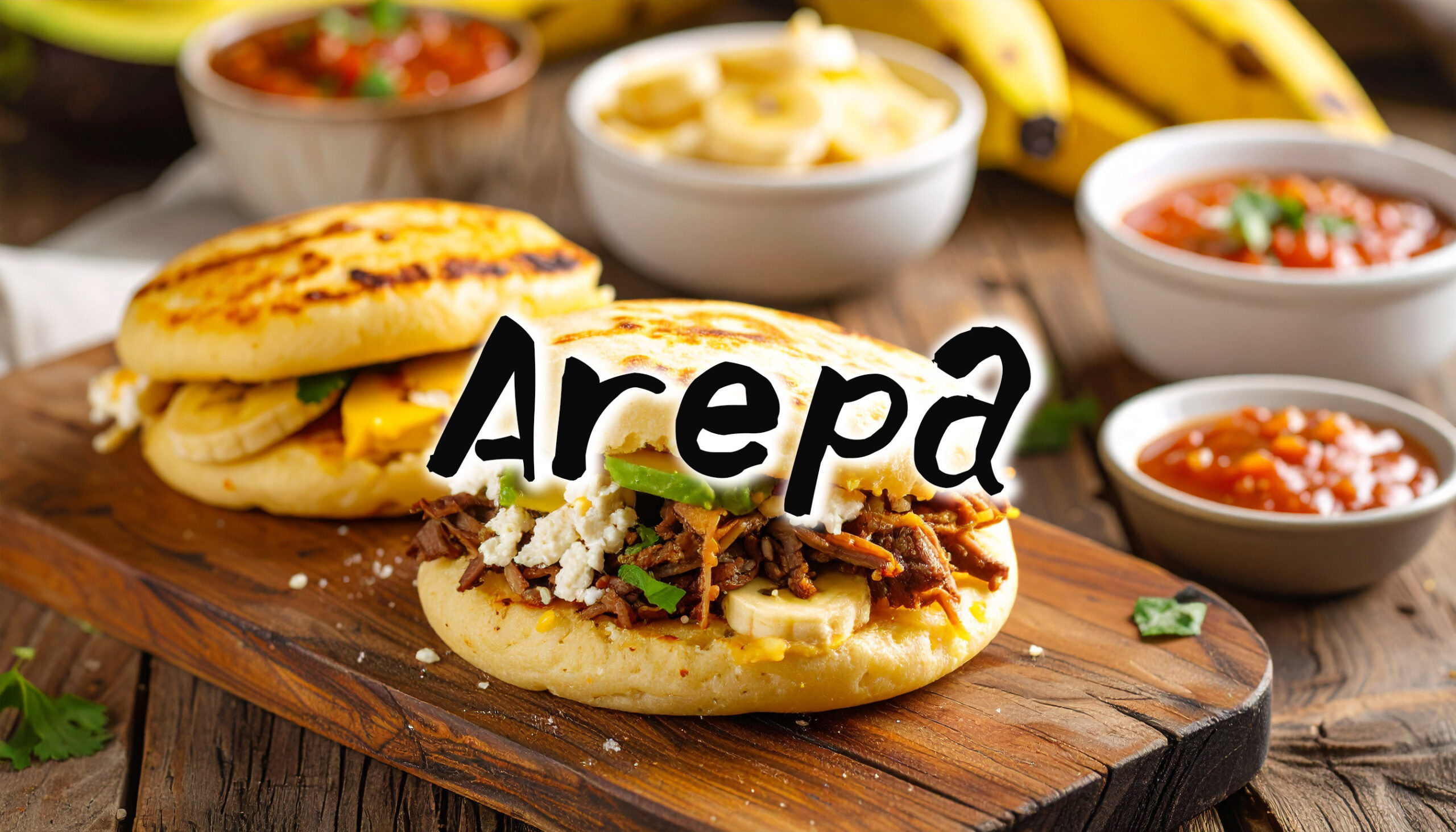
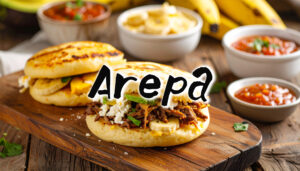
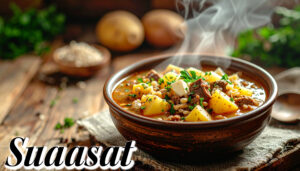

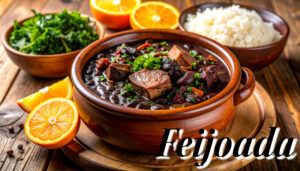

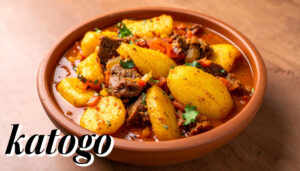
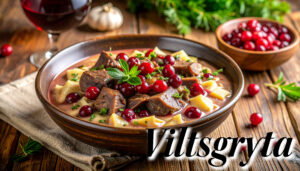
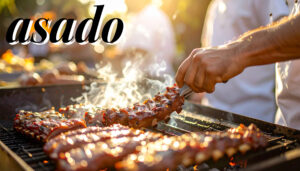
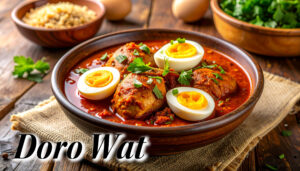
Comments